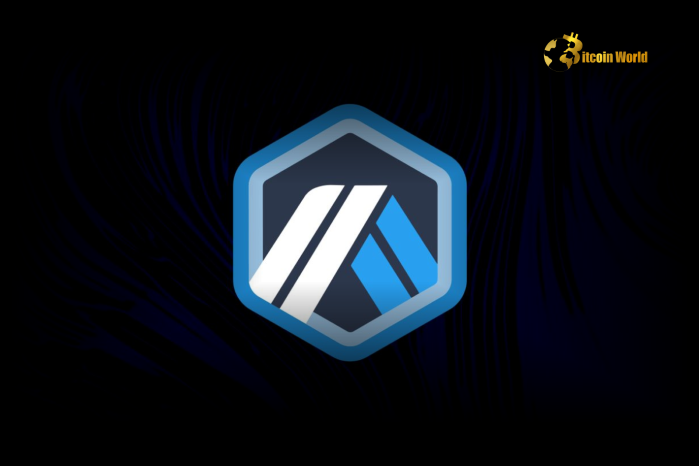The decentralized finance (DeFi) space thrives on community governance, but sometimes, even in the most innovative ecosystems, disagreements arise. Currently, the Arbitrum community, known for its vibrant and engaged members, finds itself at a crossroads. A new DeFi investment proposal has ignited a fiery debate, raising critical questions about the direction of Arbitrum’s treasury and its commitment to native projects. Let’s dive into the heart of this controversy and understand what’s causing such a stir within this leading Layer-2 scaling solution.
Why is the Arbitrum Community Questioning This DeFi Investment Proposal?
At the center of the storm is a governance proposal put forth by the Arbitrum DAO’s recently formed Growth Management Committee (GMC). The proposal suggests a significant investment of 7,500 ETH (Ethereum) into various DeFi protocols. While investing in DeFi isn’t inherently controversial, the specific protocols chosen and the perceived lack of focus on Arbitrum-native projects have sparked considerable criticism. The community’s concerns can be summarized into a few key points:
- Prioritizing Non-Native Protocols: The proposal earmarks funds for established DeFi giants like Lido (for ETH staking), Aave (for lending and borrowing), and Fluid (a cross-chain lending protocol). While these are reputable platforms, critics argue that they are not native to the Arbitrum ecosystem. This raises questions about whether the investment truly benefits Arbitrum or simply disperses funds across the wider DeFi landscape.
- Neglecting Arbitrum-Native Projects: A significant portion of the community feels that the proposal overlooks the burgeoning DeFi projects built directly on Arbitrum. These projects are crucial for the long-term growth and vibrancy of the Arbitrum ecosystem. Investing in them could foster innovation, attract more users and developers, and solidify Arbitrum’s position as a leading L2 scaling solution.
- Lack of Transparency and Community Consultation: Some community members have expressed concerns about the process leading up to the proposal. They argue for more transparency from the GMC and greater community consultation before such significant investment decisions are made. Decentralized governance ideally involves inclusive discussions and consensus-building, and some feel this process was rushed or insufficiently collaborative.
- Risk Assessment and Diversification: While DeFi investments can be lucrative, they also carry inherent risks. Some community members are questioning the risk assessment conducted for these specific protocols and whether a more diversified investment strategy, potentially including a mix of native and non-native projects, would be more prudent.
Breaking Down the DeFi Investment Proposal: What’s Actually Being Proposed?
To understand the controversy fully, let’s examine the details of the DeFi investment proposal. The GMC’s rationale likely stems from a desire to generate yield on the Arbitrum DAO’s treasury and participate in the broader DeFi ecosystem. Investing in established protocols like Lido and Aave offers relatively lower risk exposure compared to emerging, untested projects. Here’s a closer look at the protocols mentioned:
| Protocol | Description | Potential Benefits | Community Concerns (in this context) |
|---|---|---|---|
| Lido | A leading liquid staking solution for ETH and other assets. Users can stake ETH and receive stETH in return, which can be used in DeFi. | Generates yield from ETH staking, relatively established and secure protocol. | Not Arbitrum-native, yield benefits stETH holders generally, not specifically Arbitrum ecosystem. |
| Aave | A decentralized lending and borrowing protocol. Users can deposit assets to earn yield or borrow against their collateral. | High liquidity, established platform, potential to earn yield from lending. | Not Arbitrum-native, potential for capital outflow from Arbitrum ecosystem to Aave on other chains. |
| Fluid | A cross-chain lending protocol aiming to facilitate seamless lending and borrowing across different blockchains. | Cross-chain exposure, potentially higher yield opportunities, innovative approach to DeFi. | Less established than Lido and Aave, cross-chain nature might not directly benefit Arbitrum ecosystem, complexity and potential risks of cross-chain protocols. |
The proposal aims to allocate 7,500 ETH across these platforms, seeking to generate returns for the Arbitrum DAO treasury. However, the community’s pushback highlights a fundamental question: **What is the primary purpose of the DAO treasury, and how should it be utilized to best serve the Arbitrum ecosystem?**
The Power of Decentralized Governance and Crypto Community Voices
This situation underscores the importance of decentralized governance in the cryptocurrency world. The Arbitrum community’s vocal response demonstrates the power of token holders to influence decisions within a DAO. Their concerns are not simply about opposing the proposal; they reflect a deeper desire to shape the strategic direction of Arbitrum and ensure its long-term success. This debate is a healthy sign of a vibrant and engaged community that cares deeply about the project’s future.
The criticism isn’t necessarily a rejection of DeFi investments altogether. Instead, it’s a call for a more nuanced and strategic approach. Many community members likely agree that utilizing the DAO treasury for yield generation is a sound strategy. However, they advocate for a shift in focus towards supporting and nurturing projects that are integral to the Arbitrum ecosystem. This could include:
- Investing in Arbitrum-Native DeFi Protocols: Allocating funds to promising DeFi projects built on Arbitrum would directly benefit the ecosystem. This could incentivize development, increase liquidity within Arbitrum’s DeFi space, and attract more users to the platform.
- Providing Grants and Funding for Ecosystem Development: The DAO treasury could be used to fund grants for developers building on Arbitrum, supporting infrastructure projects, or initiatives that enhance the user experience.
- Strategic Partnerships: Collaborating with Arbitrum-native projects through strategic investments or partnerships could foster mutual growth and strengthen the ecosystem as a whole.
What’s Next for Arbitrum and Its DeFi Strategy?
A vote on the DeFi investment proposal is anticipated soon. The outcome of this vote will be a significant indicator of the community’s priorities and its influence on the DAO’s decision-making process. Regardless of the vote’s result, this episode serves as a valuable lesson for other DAOs and crypto projects. It highlights the critical need for:
- Transparent Communication: DAOs should prioritize clear and open communication with their communities regarding proposals, strategies, and decision-making processes.
- Community Consultation: Engaging the community in meaningful discussions and seeking feedback before making significant decisions is crucial for building consensus and ensuring alignment with community values.
- Strategic Alignment: DAO treasury management should be strategically aligned with the long-term goals and vision of the ecosystem. Investments should ideally contribute to the growth and sustainability of the project.
- Balancing Risk and Reward: DeFi investments require careful risk assessment and diversification. A balanced approach that considers both potential returns and potential risks is essential for responsible treasury management.
The Arbitrum community’s debate is a powerful example of crypto community engagement shaping the future of a project. It showcases the dynamic nature of decentralized governance and the importance of community voices in navigating the complexities of the DeFi landscape. As Arbitrum continues to evolve as a leading L2 scaling solution, how it addresses this proposal and incorporates community feedback will be crucial in defining its path forward.
Actionable Insights: What Can We Learn from the Arbitrum Debate?
This situation offers valuable insights for anyone involved in DAOs, DeFi, or the broader crypto space:
- For DAO Members: Actively participate in governance discussions, voice your opinions, and vote on proposals. Your voice matters in shaping the direction of decentralized projects.
- For Project Teams and DAOs: Prioritize transparency, community engagement, and strategic alignment in your governance processes. Listen to your community’s concerns and incorporate their feedback into your decision-making.
- For DeFi Enthusiasts: Pay attention to governance discussions within your favorite DeFi projects. Understanding the debates and proposals helps you grasp the underlying values and direction of these platforms.
- For Investors: Community engagement and governance are crucial indicators of a healthy and sustainable crypto project. Projects with active and vocal communities are often more resilient and adaptable in the long run.
The Arbitrum DeFi investment proposal debate is more than just a disagreement over fund allocation; it’s a reflection of a community deeply invested in the success of its ecosystem. It’s a testament to the power of decentralized governance and the evolving dynamics of the crypto world, where community voices can truly shape the future.
To learn more about the latest crypto market trends, explore our article on key developments shaping Ethereum institutional adoption.
News – BitcoinWorld – Read More










